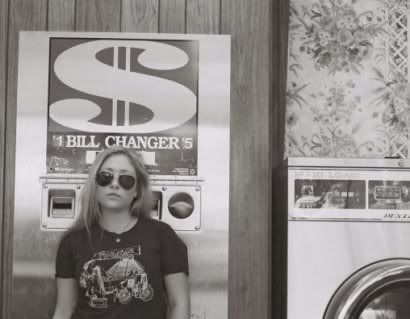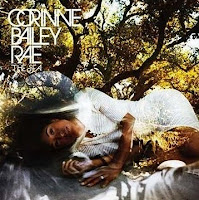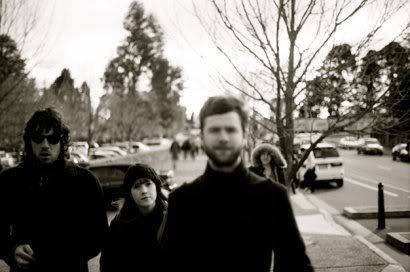On March 23, legendary jazz bassist and composer Dave Holland will issue his latest work, Pathways, introducing the first document of his eponymous Octet on his own Dare2 Records label. Culled from performances recorded at Birdland in New York City, the album features Holland’s regular working band—Robin Eubanks, Steve Nelson, Chris Potter, and Nate Smith—with the addition of three horn players in Antonio Hart (alto sax), Gary Smulyan (baritone sax), and Alex Sipiagin (trumpet).
For Holland, a three-time GRAMMY® winner, the album is but the latest manifestation of the ingenuity he’s contributed to his craft and encouraged in his fellow musicians for over 40 years. As well, his proficiency on the bass has augmented collaborations with such artists as Stan Getz, Wayne Shorter, Pat Metheny, Herbie Hancock, and Miles Davis, the latter having summoned Holland to his band in 1968, culminating with such landmark recordings as In A Silent Way and Bitches Brew.
In anticipation of the upcoming release of Pathways, Holland offered insights to the album’s origins as well as his perspectives on jazz.
What does adding three horn players bring to your sound?
Certainly the individuals help. Their improvising style and approach to playing is a great addition to what we already have there in the Quintet players. Of course they bring some new approaches that they particularly like to work with in their music. I really like to integrate that into the music of the band. On a compositional level, it’s given me a chance to expand a little bit on the writing side of the music and to create some more full context for the music to be heard in the orchestration.
 On Pathways, you revisit two songs that you’ve done in the past, “How’s Never?” and “Shadow Dance.” Why did you choose those to interpret with the Octet?
On Pathways, you revisit two songs that you’ve done in the past, “How’s Never?” and “Shadow Dance.” Why did you choose those to interpret with the Octet?
We actually had quite a big selection of music we were performing that week. There were several other pieces that we played that we didn’t decide to put on the record. I was looking to make a good album of the band. That was a strong track and it seemed to fit and work with the other pieces. And I was looking, of course, to be able to feature people in certain situations and settings. That tune fulfilled that. It’s a song anyway that I’ve revisited several times in different groups; it’s the gift that keeps giving, you might say. [Laughs]
Given the nature of improvisation in a live performance, as the bandleader how do you distinguish between a fruitful performance and of someone just winging it?
Well I’m glad to say nobody in our band wings it. Everybody goes for it no matter what they’re doing. Most musicians that have any self-respect try to do the best they can in every situation they’re in. Now, this is the nice thing about live recording, that in the course of performing for a week you have several choices often of which performance to use. And so there are times when a musician will be particularly inspired on a night or on a particular tune. And the nice thing about recording live is that you’re then able to capture it, to document it. So you make a choice. For me it’s based on which performances sound the best, which performances present the musicians who are playing and being featured in the best possible creative situation.
Do you have a preference for your bandmates as far as them having technical skill over intuitive playing?
No, I think the technique should serve the creative need. If technique is used for the sake of it, then of course it becomes meaningless. But certainly technique as it serves the creative impulse and ideas is important in order to express them. When we’re playing, we’re all listening to each other and being very, very intuitive about the music and anticipating where we’re going and what’s happening and really communicating on every level. To me, that’s really the most important thing, that everybody’s connected that way and listening and communicating in the music.
There’s long been a spirit of mentorship in jazz. Is that something you’ve tried to do as well?
It’s not a self-conscious thing; it’s just a part of the way that the tradition is in the music. I was helped by musicians when I came up and I’m still being helped and informed. I’m learning from my fellow musicians as we go—people coming up with new ideas or somebody’s heard something—and we talk about it and they turn you on to it. So the mentoring goes on all the time. Do I seek it out? I have some teaching activities that I certainly take very seriously. I’m an artist in residence at a couple universities and that part of it is an important part of my activities, to pass on experience and try to communicate what I’ve learned and pass on the heritage just as has been passed on to me.
So that’s how it continues. And I’m certainly interested in keeping in touch with young players and what they’re doing. But when it comes down to it, it’s about the player and what they’re doing and the quality of their work. That’s the most important thing for me. Of course mentoring is part of the tradition of this music in all kinds of forms, sometimes in a formal way when you’re teaching in a classroom or sometimes in a discussion with a player after a gig…[Though] if you’re talking about mentoring in terms of instructing, I don’t do that at all really. Robin Eubanks—one of the guys in my band—said something like, “Dave just winds the band up and lets it go.” I thought that was kind of an apt description in a way.
That entails a lot of trust, doesn’t it?
Of course. It’s all about trust. Any leader, whether it’s in business or in music or whatever, you need to trust the people who are working with you. You need to feel confidence in them and empower them and give them a chance to show what they can do. This is the same thing, really. I’m just trying to create a setting where everybody can explore their creativity. And I choose the musicians. That’s the big choice to make, finding musicians that are sympathetic to the music that we’re going to be playing and who have the ability and the generosity to support other players in a collective way. So all these qualities are things that I think about before I ask somebody to be a part of a project. Once they’re in the band, for me it’s an important thing then to trust them, to trust my decision on asking them to be there, and to give them as much room creatively as is possible within the music.
Do you still get the same sort of rush you’ve always gotten when a live performance goes over well?
Oh yeah. When the band’s really clicking on a high and intuitive level, you come away from the performance that you’ve really achieved something as a group as well as individually. That’s the greatest feeling.
For Holland, a three-time GRAMMY® winner, the album is but the latest manifestation of the ingenuity he’s contributed to his craft and encouraged in his fellow musicians for over 40 years. As well, his proficiency on the bass has augmented collaborations with such artists as Stan Getz, Wayne Shorter, Pat Metheny, Herbie Hancock, and Miles Davis, the latter having summoned Holland to his band in 1968, culminating with such landmark recordings as In A Silent Way and Bitches Brew.
In anticipation of the upcoming release of Pathways, Holland offered insights to the album’s origins as well as his perspectives on jazz.
What does adding three horn players bring to your sound?
Certainly the individuals help. Their improvising style and approach to playing is a great addition to what we already have there in the Quintet players. Of course they bring some new approaches that they particularly like to work with in their music. I really like to integrate that into the music of the band. On a compositional level, it’s given me a chance to expand a little bit on the writing side of the music and to create some more full context for the music to be heard in the orchestration.
 On Pathways, you revisit two songs that you’ve done in the past, “How’s Never?” and “Shadow Dance.” Why did you choose those to interpret with the Octet?
On Pathways, you revisit two songs that you’ve done in the past, “How’s Never?” and “Shadow Dance.” Why did you choose those to interpret with the Octet?We actually had quite a big selection of music we were performing that week. There were several other pieces that we played that we didn’t decide to put on the record. I was looking to make a good album of the band. That was a strong track and it seemed to fit and work with the other pieces. And I was looking, of course, to be able to feature people in certain situations and settings. That tune fulfilled that. It’s a song anyway that I’ve revisited several times in different groups; it’s the gift that keeps giving, you might say. [Laughs]
Given the nature of improvisation in a live performance, as the bandleader how do you distinguish between a fruitful performance and of someone just winging it?
Well I’m glad to say nobody in our band wings it. Everybody goes for it no matter what they’re doing. Most musicians that have any self-respect try to do the best they can in every situation they’re in. Now, this is the nice thing about live recording, that in the course of performing for a week you have several choices often of which performance to use. And so there are times when a musician will be particularly inspired on a night or on a particular tune. And the nice thing about recording live is that you’re then able to capture it, to document it. So you make a choice. For me it’s based on which performances sound the best, which performances present the musicians who are playing and being featured in the best possible creative situation.
Do you have a preference for your bandmates as far as them having technical skill over intuitive playing?
No, I think the technique should serve the creative need. If technique is used for the sake of it, then of course it becomes meaningless. But certainly technique as it serves the creative impulse and ideas is important in order to express them. When we’re playing, we’re all listening to each other and being very, very intuitive about the music and anticipating where we’re going and what’s happening and really communicating on every level. To me, that’s really the most important thing, that everybody’s connected that way and listening and communicating in the music.
There’s long been a spirit of mentorship in jazz. Is that something you’ve tried to do as well?
It’s not a self-conscious thing; it’s just a part of the way that the tradition is in the music. I was helped by musicians when I came up and I’m still being helped and informed. I’m learning from my fellow musicians as we go—people coming up with new ideas or somebody’s heard something—and we talk about it and they turn you on to it. So the mentoring goes on all the time. Do I seek it out? I have some teaching activities that I certainly take very seriously. I’m an artist in residence at a couple universities and that part of it is an important part of my activities, to pass on experience and try to communicate what I’ve learned and pass on the heritage just as has been passed on to me.
So that’s how it continues. And I’m certainly interested in keeping in touch with young players and what they’re doing. But when it comes down to it, it’s about the player and what they’re doing and the quality of their work. That’s the most important thing for me. Of course mentoring is part of the tradition of this music in all kinds of forms, sometimes in a formal way when you’re teaching in a classroom or sometimes in a discussion with a player after a gig…[Though] if you’re talking about mentoring in terms of instructing, I don’t do that at all really. Robin Eubanks—one of the guys in my band—said something like, “Dave just winds the band up and lets it go.” I thought that was kind of an apt description in a way.
That entails a lot of trust, doesn’t it?
Of course. It’s all about trust. Any leader, whether it’s in business or in music or whatever, you need to trust the people who are working with you. You need to feel confidence in them and empower them and give them a chance to show what they can do. This is the same thing, really. I’m just trying to create a setting where everybody can explore their creativity. And I choose the musicians. That’s the big choice to make, finding musicians that are sympathetic to the music that we’re going to be playing and who have the ability and the generosity to support other players in a collective way. So all these qualities are things that I think about before I ask somebody to be a part of a project. Once they’re in the band, for me it’s an important thing then to trust them, to trust my decision on asking them to be there, and to give them as much room creatively as is possible within the music.
Do you still get the same sort of rush you’ve always gotten when a live performance goes over well?
Oh yeah. When the band’s really clicking on a high and intuitive level, you come away from the performance that you’ve really achieved something as a group as well as individually. That’s the greatest feeling.





















